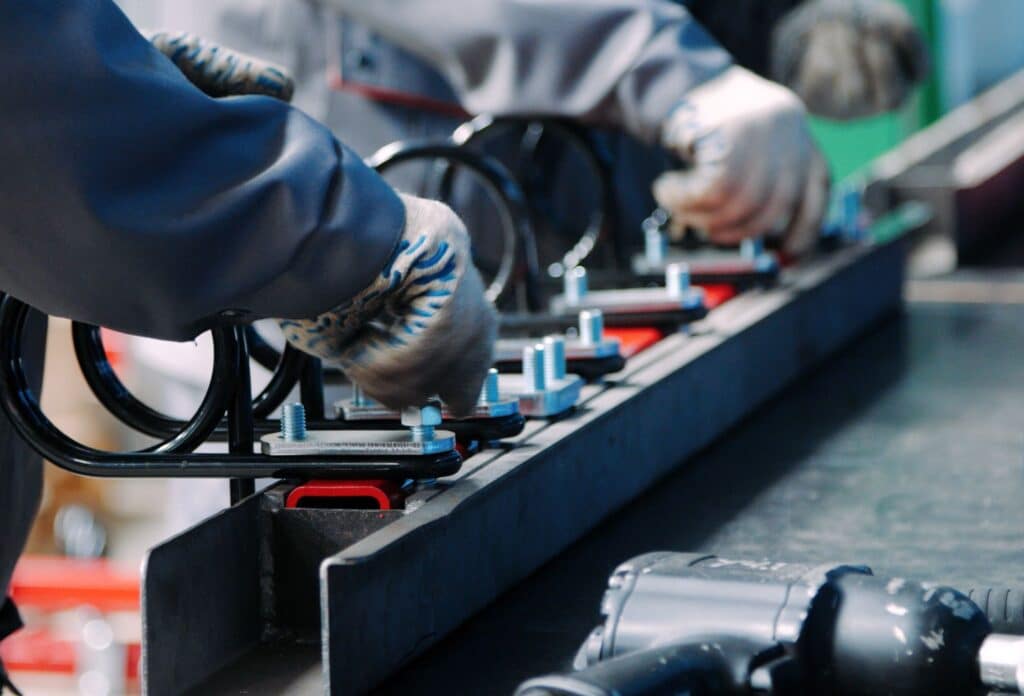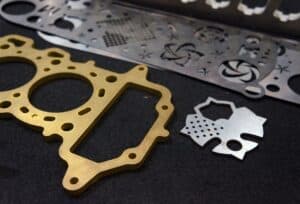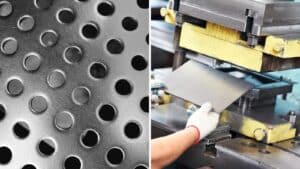Subassembly assembly is an industrial process by which various parts or components are joined together to form a larger unit. This is a widely used method in the manufacturing industry because it enables significant time and cost savings and, in general, optimizes the mass production process.
At Bericht we are experts in the manufacturing of metal parts for different industries, and therefore, in this comprehensive guide, we explain what this process entails and why it is beneficial to increase production.
What is subassembly assembly?
The subassembly assembly process consists of the joining of pre-existing components to form a part or complete product. Instead of manufacturing each piece from scratch, previously fabricated or acquired subgroups are used, which are then assembled to create the final structure.
This method allows for more efficient production by leveraging existing parts and reducing the need to manufacture individual components at each stage. It also facilitates product modularity and customization by allowing the combination of different elements according to the specific needs of each job.
Key strategies in subassembly assembly
There are several strategies that optimize efficiency and flexibility in industrial production through subassembly assembly. One of the most notable is modularization, which involves dividing a product into independent modules or subgroups that can be easily assembled and disassembled. This facilitates manufacturing, transportation, and maintenance of the products, as well as allowing greater customization according to customer needs.
Another important strategy is the standardization of components, which involves using common parts and subassemblies across different products. This reduces production costs and simplifies inventory management by minimizing the variety of parts needed. Standardization also facilitates the integration of new components and the upgrading of existing products.
Assemble-To-Order (ATO)
Assemble-To-Order, (ATO), is a strategy that allows for greater customization and flexibility in production. Instead of assembling products in mass and maintaining an inventory of finished goods, companies keep individual components in stock. When a customer order is received, products are assembled according to the exact specifications of the order.
This strategy reduces the costs associated with inventory storage and minimizes the risk of product obsolescence. It also enables a quick response to changing market demands and the ability to offer customized products to customers.
It is especially beneficial in industries where customization is key, such as the manufacturing of medical equipment, custom automobiles, and electronic products.
Related manufacturing processes
There are several processes involved within the subassembly assembly system that prepare components for final assembly.
- Casting: the process of pouring molten metal into a mold to create solid parts with specific shapes. This method is used to manufacture metal components such as housings, bases, and other structural elements.
- Machining: involves shaping components using cutting tools such as lathes, milling machines, and drills. This process is used to create parts with tight tolerances and precise finishes, such as gears, shafts, and brackets.
- Assembly: the final stage where subassemblies and individual components are joined to form the complete product. Various assembly techniques can be used, such as welding, riveting, screwing, or bonding, depending on design requirements and product specifications.
These procedures are part of the assembly method as they prepare the components for integration into the final unit.
Advantages of subassembly assembly
This manufacturing method provides numerous advantages that lead many companies to incorporate it into their production systems.
Here are the most notable ones:
- Efficiency and cost reduction: allows for more efficient production by reducing assembly times and costs associated with handling and transporting individual components.
- Greater flexibility and customization: by assembling subassemblies instead of individual components, companies can more easily adapt to customer-specific needs and make personalized adjustments to products.
- Improved product lifecycle management: by simplifying the assembly process and reducing dependence on individual components, companies can enhance lifecycle management from design through manufacturing and maintenance.
- Improved customer satisfaction: by offering more customized and tailored products to individual customer needs, customer satisfaction can be significantly improved and business relationships strengthened.
The subassembly assembly process represents a smart option for assembly companies seeking optimization and agility in their processes. This methodology not only saves time and resources but also improves operational efficiency and market competitiveness.
Frequently Asked Questions about Subassembly Assembly
1. What types of products are suitable for subassembly assembly?
Subassembly assembly is suitable for a wide variety of products, from small electronic devices to complex industrial machinery. It is commonly used in industries such as:
- Automotive: to assemble engine, transmission, and chassis components.
- Aerospace: to build airplanes, rockets, and satellites.
- Electronics: to assemble computers, smartphones, and other electronic devices.
- Medical: to manufacture medical equipment, prosthetics, and implantable devices.
2. What are the advantages of subassembly assembly over traditional manufacturing?
Subassembly assembly offers several advantages over the traditional manufacturing of individual parts, including:
- Greater efficiency and cost reduction: Subassembly reduces production time, material waste, and labor costs.
- More flexibility and customization: It allows products to be adapted to specific customer needs and design changes to be made more easily.
- Improved quality: Preassembled subassemblies can be tested and quality-checked before final integration, ensuring higher final product quality.
- Logistics simplification: Transporting modular subassemblies is more efficient than transporting individual components.
3. What challenges does subassembly assembly present?
While subassembly assembly offers many benefits, it also presents some challenges that must be considered:
- Planning and coordination: Requires careful planning and coordination to ensure that subassemblies are available at the right time and in the correct sequence.
- Quality control: It is important to implement strict quality controls to ensure that subassemblies meet specifications and do not compromise final product quality.
- Supplier management: If subassemblies are sourced from external suppliers, strong and reliable relationships must be established to ensure a consistent and high-quality supply.
4. What technologies are used in subassembly assembly?
The technologies used in subassembly assembly vary depending on the complexity of the product and production requirements. Some common technologies include:
- Robotics: Robots are used to perform repetitive assembly tasks with high precision and efficiency.
- Machine vision: Vision systems are used to inspect subassemblies and ensure they meet specifications.
- Computer-aided manufacturing (CAM) software: CAM software is used to create programs that control CNC machines for machining subassembly components.
5. How can subassembly assembly be implemented in a company?
Implementing subassembly assembly in a company requires a careful evaluation of production needs, available resources, and company capabilities. Some steps to follow include:
- Identify suitable products: Analyze current or future products to determine which are suitable for subassembly.
- Design modular subassemblies: Design subassemblies that are easy to assemble, transport, and store.
- Establish quality processes: Implement quality controls to ensure the quality of subassemblies and the final product.
- Select the right technology: Choose appropriate automation and control technologies to optimize the assembly process.
- Train personnel: Provide training to staff on new assembly processes and technologies.
6. What future trends are observed in subassembly assembly?
Subassembly assembly is expected to continue evolving in the coming years, driven by the following trends:
- Greater automation: Robotic automation and artificial intelligence are expected to play an increasingly important role in subassembly assembly.
- 3D printing: 3D printing could be used to create customized and complex subassemblies more easily and efficiently.
- Advanced materials: New materials such as lightweight composites and high-strength alloys are expected to be used to manufacture lighter and more durable subassemblies.
Subassembly assembly represents a flexible and efficient manufacturing methodology that offers numerous advantages to companies across various sectors. By understanding the benefits, challenges, and trends of this technique, businesses can make informed decisions on how to implement it and optimize their production processes.




